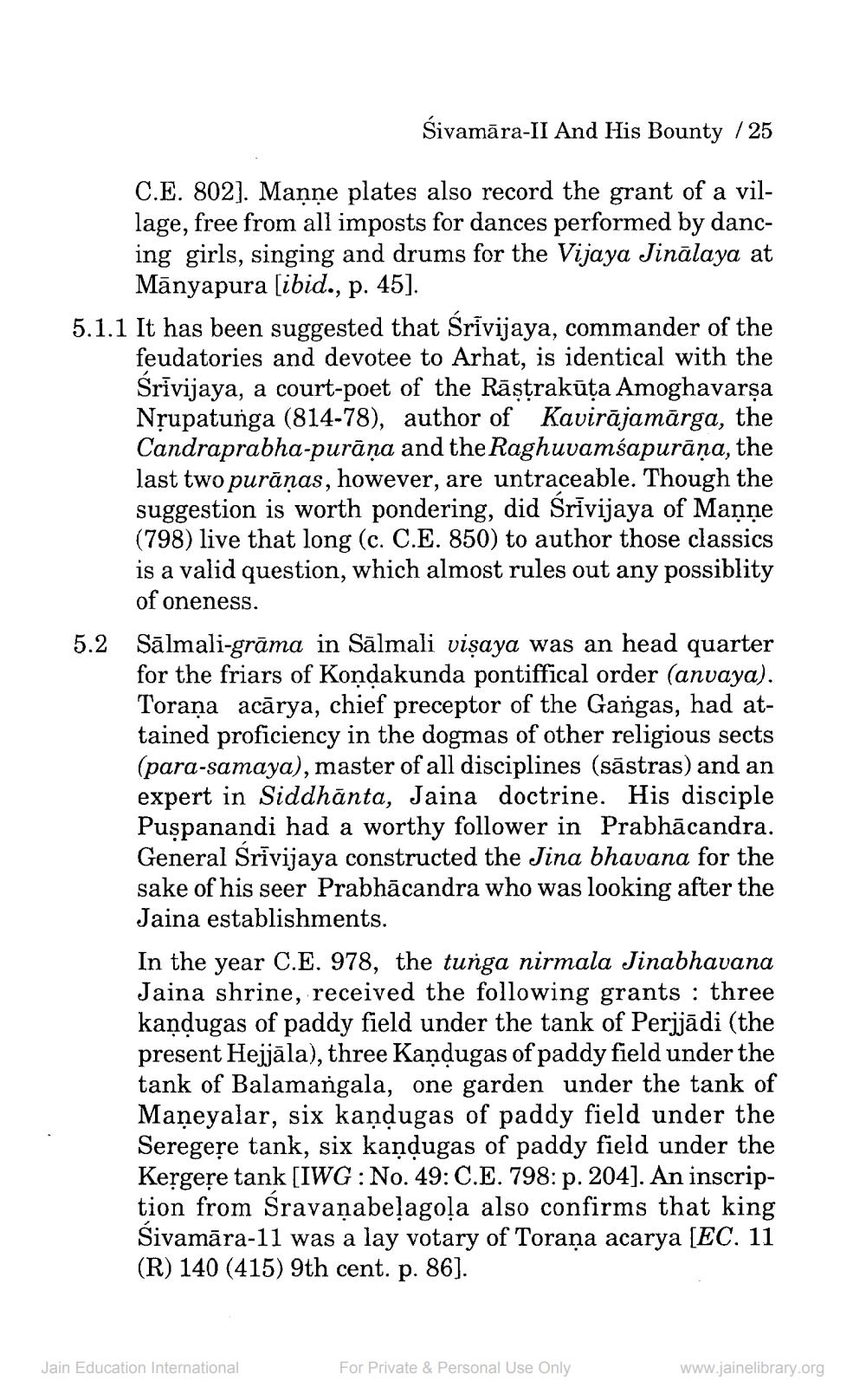________________
Śivamāra-II And His Bounty / 25
C.E. 802]. Manne plates also record the grant of a village, free from all imposts for dances performed by dancing girls, singing and drums for the Vijaya Jinālaya at
Mānyapura (ibid., p. 45). 5.1.1 It has been suggested that Srivijaya, commander of the
feudatories and devotee to Arhat, is identical with the Srivijaya, a court-poet of the Rāştrakūta Amoghavarşa Nrupatunga (814-78), author of Kavirājamārga, the Candraprabha-purāņa and the Raghuvamśapurāņa, the last two purāņas, however, are untraceable. Though the suggestion is worth pondering, did Srivijaya of Manne (798) live that long (c. C.E. 850) to author those classics is a valid question, which almost rules out any possiblity
of oneness. 5.2 Sālmali-grāma in Sālmali vişaya was an head quarter
for the friars of Kondakunda pontiffical order (anvaya). Toraņa acārya, chief preceptor of the Gangas, had attained proficiency in the dogmas of other religious sects (para-samaya), master of all disciplines (sāstras) and an expert in Siddhānta, Jaina doctrine. His disciple Puspanandi had a worthy follower in Prabhācandra. General Srivijaya constructed the Jina bhavana for the sake of his seer Prabhācandra who was looking after the Jaina establishments. In the year C.E. 978, the tunga nirmala Jinabhavana Jaina shrine, received the following grants : three kandugas of paddy field under the tank of Perijādi (the present Hejjāla), three Kandugas of paddy field under the tank of Balamangala, one garden under the tank of Maņeyalar, six kandugas of paddy field under the Seregere tank, six kaņdugas of paddy field under the Kergere tank [IWG:No. 49: C.E. 798: p. 204]. An inscription from Sravanabelagola also confirms that king Sivamāra-11 was a lay votary of Toraņa acarya (EC. 11 (R) 140 (415) 9th cent. p. 86).
Jain Education International
For Private & Personal Use Only
www.jainelibrary.org




